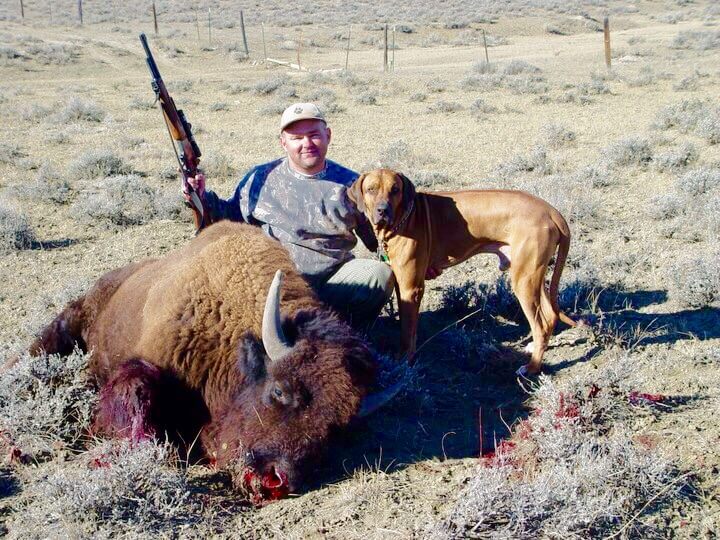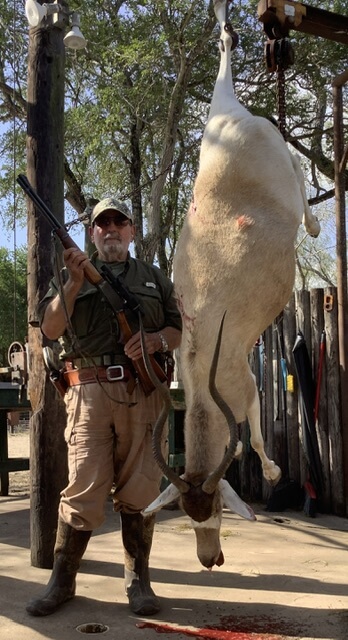Lever Actions: An American Rifle For Hunters
by Trapr Swonson | Published: Nov 04, 2024
Estimated reading time: 11 minutes
With the resurgence in big-bore lever guns, lever actions in general have gained popularity. Traditional lever-action calibers like .30-30, .35 Remington, and .45-70, as well as pistol calibers like .357 Magnum, .44 Magnum, and .45 Colt, remain popular choices. Additionally, modern lever actions now come in calibers like .308 Winchester, .243 Winchester, and even some magnums. Some calibers offer excellent versatility, while others serve specialized purposes. There are also takedown guns that can be stowed until needed and assembled within seconds.

Table of contents

A Hunter’s Rifle
Lever actions are often presumed inaccurate or not precise enough for long-range shooting. But what defines “enough” accuracy or “long-range” shooting? I’ve used World War II-era Savage 99s to take game at over 200 yards. Lever actions have also been used to take Africa’s Big Six. Many hunters even customize lever actions into beautiful and effective rifles for big game.

For me, hunting isn’t just about the shot. I enjoy every aspect, from planning the hunt and preparing, to spotting, stalking, and finally taking the shot. Even following up on game is part of the process. What I enjoy most, however, is closing the distance and making the final approach, sometimes choosing a spot to sit and wait for game to approach. Experiencing wildlife up close without their knowledge is what hunting is about for me. Short-range hunting fits my style, and lever actions suit my methods well.

Sendero Country
My most recent lever-action hunt took place in what is typically long-range country: deep South Texas, in sendero country. I’d been invited on a hunt for a cow nilgai and feral hogs, but the ranch didn’t allow handgun hunting. So, I opted for lever actions, the same as my host. He used a Rossi 92 in .454 Casull—a potent, handy rifle that’s proven effective for him. It fires a 300-grain bullet at over 2000 fps, outperforming even my Marlin 1895 .45-70.

I considered the terrain for my choice. Sendero country consists of thick, low scrub brush with roads and cleared paths called senderos. These open areas can range from sparse to wide open, depending on how and when they were cleared. Shots here can be from a few yards up to several hundred.

I chose two guns I hadn’t yet used on game. For coyotes, I brought a Savage 99 in .250 Savage. For feral pigs and nilgai, I chose a vintage Marlin .444 that I’d modified into a prototype trapper configuration. I used Remington Core-Lokt 100-grain ammo in the Savage and a vintage Remington 240-grain soft point in the Marlin .444.

Accurate
While scouting the ranch, I kept the Savage handy. At one point, we drove up to a water hole where cattle rested on the shady side. As we eased through, we spotted a herd of feral pigs asleep in the mud on the opposite side. A single pig didn’t wake as his herd scattered. The Savage 99 delivered a precise shot with a 100-grain Core-Lokt SP just behind the pig’s right eye from 160 yards.

The next day, the Marlin had its chance. A nilgai cow approached within 60 yards, and two well-placed hits secured my first nilgai. The first shot landed perfectly with her left leg forward as she walked broadside, and the second connected just as she reached the mesquite brush line. All rounds were fired within 5-6 seconds, and the recovered bullets showed excellent mushrooming and intact performance.

Rapid Fire Lever Action
Lever actions offer the advantage of rapid, accurate follow-up shots. I believe in delivering additional shots while the animal is still on its feet. Admiring an initial shot without following up can sometimes lead to a long track. Both hits on the nilgai were placed accurately as she ran for cover—something difficult to achieve with a bolt action.

Another instance of quick shots proved valuable during a destructive animal abatement job. While riding down a road, I saw a sounder of feral pigs paralleling us. We stopped and, after exiting the side-by-side, I chose the largest lead pig. My first shot hit just behind the shoulders but didn’t slow it. I quickly chambered another round, this time aiming to lead more, and brained the pig before it reached cover. The Marlin 1894 in .44 Magnum delivered two fast, accurate shots in an open area just 15 yards wide.

My First Nontraditional Lever Action
My first lever action had a poor bore, so I replaced it with a Savage 99 a year later, acquired from a school friend. Chambered in .300 Savage, it became my favorite deer rifle. The 99 felt like it magically flew to my shoulder, the trigger seeming to pull itself. With numerous hits on game, it earned notches on its recoil pad. Whitetail deer, feral pigs, coyotes, and javelinas all fell to its sights. The 150-grain bullets at 2500-2600 fps performed wonderfully, with only one recovered—most passed through effectively. An acquaintance has similar success with his two Savage 99s in .250-3000 and .22 Hi-Power for Arizona javelina and Coues deer.

Big Bore Power
The only newer Marlin I own, a Model 1895, came with a cross-bolt safety. Purchased in the early ‘90s as a 22” barrel, I soon had it shortened to 17”. I’ve hunted extensively with it for whitetails and pigs, and even took it to Colorado and Montana for elk, bison, and mule deer. Except for briefly using 300-grain JHPs for deer and cast 405-grain bullets for bison, I’ve mostly used 350-grain Speer soft points. This setup holds a 1.5-inch group at 100 yards—enough accuracy for any need. Now fitted with a 2.5x scope with a heavy duplex, it excels in low-light conditions. The Speer 350-grain leaves the barrel at 1850 fps, sufficient for anything in North America.

The Speer bullet has proven excellent for all my uses and all types of game. This rifle consistently holds three-shot groups within 1.5 inches at 100 yards, providing more than enough accuracy for its intended purpose. The Model 1895 is also well-suited for tracking moving game and delivering precise shots. Equipped with a 2.5x scope with a heavy duplex, it performs exceptionally in low-light conditions, even under a bright moon. The Speer 350-grain bullet exits the 17-inch barrel at 1850 fps, offering ample power for anything in North America.

Another Nontraditional Lever Action
Another nontraditional lever I own is a Winchester 88 in .308 Winchester. Similar to my Savage 99 in .300 Savage, the .308 caliber is easier to find. The 88 came as a barreled action, and I bedded it in a Boyds laminated stock. Accurate and versatile, the .308 Winchester is ideal for medium game. So far, this rifle has taken Texas whitetails and feral hogs, proving itself superb for general-purpose hunting.

Medium Bore Power
This last lever action, my “mini .45-70,” is a Marlin 336 in .35 Remington. Loaded with a 220-grain bullet at 2200 fps using Hodgdon Leverevolution powder, it reaches Buffalo Bore load ballistics. The Speer bullet works perfectly at this velocity, boosting the performance of the old Remington caliber to handle large black bears, elk, and moose. Zeroed at 2” high at 100 yards, it’s only 3.5” low at 200.
READ MORE: Hunting Handgun Bullet Alternative

The .35 Remington’s recoil is manageable, making follow-up shots quicker. In thick cover, an exit wound simplifies tracking, while the bullet’s construction enables deep penetration. Although it falls behind the .45-70 in ft-lbs beyond 100 yards, its trajectory is better. I once watched a friend make a 225-yard shot on an exotic antelope in South Texas. The shot, with Hornady FTX ammo, dropped the antelope instantly.

For Hunters
Traditional lever actions serve hunters well, offered in calibers tailored for those who hunt. Their accuracy is more than adequate for practical hunting.
This Article
- Category: Hunting
- Including: Hunting
EPIC ADVENTURES START HERE!
No spam. Just the latest releases and tips, interesting articles, and early access to exclusive offers and premium content.